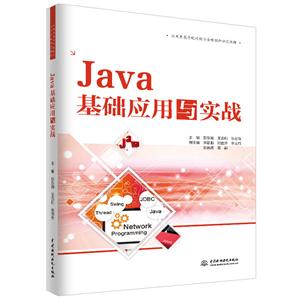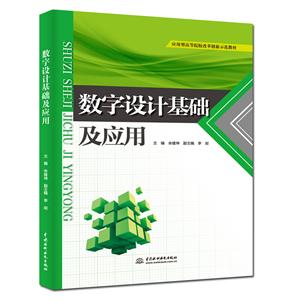
作者:邱满,王倩
页数:152
出版社:中国水利水电出版社
出版日期:2023
ISBN:9787522614144
电子书格式:pdf/epub/txt
内容简介
本书是新能源汽车双语教材,全书系统介绍了新能源汽车技术和新能源汽车历史、发展现状及趋势,重点介绍了纯电动汽车、混合动力电动汽车、燃料电池电动汽车等的结构和工作原理;对混合动力汽车运行控制系统、电动汽车电驱动系统、再生制动系统、汽车混合能量存储系统等的结构和基本原理也进行了介绍。本书理论性和实用性兼顾,每章都配备适量习题,供读者加深对新能源汽车的理解并进一步检验学习成果。 本书可作为高等院校车辆工程、汽车服务工程或交通运输等专业的教材,也可作为从事新能源汽车专业技能培训或相关领域的工程技术人员、管理人员和科研人员的参考书。
作者简介
邱满,女,1989年11月出生。2015年以来任职于齐鲁理工学院。于2017年担任车辆工程专业副主任。主要讲授汽车构造、汽车检测与故障诊断、汽车车身结构与设计、新能源汽车、汽车制造工艺学与电工电子技术等课程。2016-2018年,面向全校学生,独立承担每年两次的汽车高级、中级维修工理论与实操的培训工作。 2016年,以副主编出版教材1部《汽车发动机构造与维修》。
目录
前言
第1章 新能源汽车发展概论
Introduction to the development of new energy vehicles
1.1 内燃机汽车与新能源汽车优缺点对比 Comparison of advantages and disadvantages of internal combustion (IC) engine vehicles and new energy vehicles
1.1.1 内燃机汽车的优缺点 Advantages and disadvantages of internal combustion (IC) engine vehicles
1.1.2 新能源汽车的优缺点 Advantages and disadvantages of new energy vehicles
1.2 应对未来资源短缺的汽车发展策略 Transportation development strategies of future oil supply shortage
1.3 新能源汽车的发展史 History of new energy vehicles
1.3.1 纯电动汽车的发展史 History of pure electric vehicles
1.3.2 混合动力汽车的发展史 History of HEVs
1.3.3 燃料电池汽车的发展史 History of fuel cell vehicles
习题
第2章 电动汽车
Electric vehicles(EVs)
2.1 电动汽车的特点 Characteristics of EVs
2.2 电动汽车的结构 Construction of EVs
2.3 电动汽车电驱动系统 Electric propulsion systems for EVs
2.3.1 电驱动系统的功能及汽车对电驱动系统的要求 The function and the requirement of electric propulsion systems
2.3.2 电动驱动系统的结构演变 The structure evolution of electric propulsion systems
2.3.3 直流电动机驱动 DC motor drives
2.3.4 异步电动机驱动 Induction motor drives
2.3.5 永磁无刷直流电动机驱动 Permanent magnetic brushless DC motor drives
2.3.6 永磁无刷直流电动机的结构和分类 BLDC machine construction and classification
习题
第3章 混合动力电动汽车
Hybrid electric vehicles
3.1 混合动力电驱动系统的概念 Concept of hybrid electric drive trains
3.2 混合动力电驱动系统的构造 Architecture of hybrid electric drive trains
3.2.1 串联混合动力电驱动系统 Series hybrid electric drive trains
3.2.2 并联混合动力电驱动系统 Parallel hybrid electric drive trains
3.3 混合动力汽车的驱动配置 Configuration of hybrid drives
3.3.1 原理 Principle
3.3.2 转矩曲线 Torque curve
3.3.3 运行模式 Operating modes
3.3.4 混合驱动模式 Hybrid driving modes
习题
第4章 混合动力汽车运行控制
Operation of hybrid vehicles
4.1 混合动力控制 Hybrid control
4.2 混合动力运行策略 Operating strategies for hybrid vehicles
4.3 工作点优化 Operating-point optimization
4.3.1 驱动转矩分配 Distribution of drive torque
4.3.2 状态机决策 Determination in the automatic state machine
4,3.3 运行策略分布 Distribution by operating strategy
4.4 电能产生策略 Strategy of electrical energy generation
4.5 内燃机的设计 Design of the intermal combustion engine
习题
第5章 再生制动系统
Regenerative braking system
5.1 引言 Introduction
5.2 再生制动策略 Strategies of regenerative braking
5.2.1 原则 Principle
5.2.2 协同再生制动系统 Cooperatively regenerative braking system
5.2.3 要求 Requirements
5.2.4 协同制动操作 Cooperative braking maneuvers
5.3 制动力分配 Braking-force distribution
习题
第6章 汽车混合能量存储系统
Hybrid energy storage systems for vehicles
6.1 电负载特性 Electric load characteristics
6.2 车载储能装置选择 Selection of vehicle energy storage
6.2.1 化学电池 Chemical batteries
6.2.2 飞轮储能装置 Flywheel
6.2.3 超级电容器 Ultracapacitors
6.3 混合储能系统 Hybrid energy storage system
6.3.1 电池/超级电容器系统 Battery/Ultracapacitor system
6.3.2 飞轮/超级电容器系统 Flywheel/Ultracapacitor system
6.3.3 飞轮缓冲器 Flywheel buffer
6.4 传动电机基本原理 Basic operation of transmotor
6.4.1 引言 Introduction
6.4.2 传动电机的数学模型 Mathematical model of transmotor
6.4.3 传动电机-飞轮系统运行模式 Transmotor-Flywheel system modes of operation
6.4.4 传动电机-飞轮和机械电池动力总成的比较 Comparison of transmotor-flywheel and mechanical-battery powertrain
6.5 汽车能量存储系统未来发展趋势 Future directions for vehicle energy storage
习题
第7章 燃料电池汽车和燃料电池
Fuel cell vehicles and fuel cells
7.1 燃料电池汽车 Fuel cell vehicles
7.2 燃料电池驱动的混合动力汽车 Fuel cell-p
第1章 新能源汽车发展概论
Introduction to the development of new energy vehicles
1.1 内燃机汽车与新能源汽车优缺点对比 Comparison of advantages and disadvantages of internal combustion (IC) engine vehicles and new energy vehicles
1.1.1 内燃机汽车的优缺点 Advantages and disadvantages of internal combustion (IC) engine vehicles
1.1.2 新能源汽车的优缺点 Advantages and disadvantages of new energy vehicles
1.2 应对未来资源短缺的汽车发展策略 Transportation development strategies of future oil supply shortage
1.3 新能源汽车的发展史 History of new energy vehicles
1.3.1 纯电动汽车的发展史 History of pure electric vehicles
1.3.2 混合动力汽车的发展史 History of HEVs
1.3.3 燃料电池汽车的发展史 History of fuel cell vehicles
习题
第2章 电动汽车
Electric vehicles(EVs)
2.1 电动汽车的特点 Characteristics of EVs
2.2 电动汽车的结构 Construction of EVs
2.3 电动汽车电驱动系统 Electric propulsion systems for EVs
2.3.1 电驱动系统的功能及汽车对电驱动系统的要求 The function and the requirement of electric propulsion systems
2.3.2 电动驱动系统的结构演变 The structure evolution of electric propulsion systems
2.3.3 直流电动机驱动 DC motor drives
2.3.4 异步电动机驱动 Induction motor drives
2.3.5 永磁无刷直流电动机驱动 Permanent magnetic brushless DC motor drives
2.3.6 永磁无刷直流电动机的结构和分类 BLDC machine construction and classification
习题
第3章 混合动力电动汽车
Hybrid electric vehicles
3.1 混合动力电驱动系统的概念 Concept of hybrid electric drive trains
3.2 混合动力电驱动系统的构造 Architecture of hybrid electric drive trains
3.2.1 串联混合动力电驱动系统 Series hybrid electric drive trains
3.2.2 并联混合动力电驱动系统 Parallel hybrid electric drive trains
3.3 混合动力汽车的驱动配置 Configuration of hybrid drives
3.3.1 原理 Principle
3.3.2 转矩曲线 Torque curve
3.3.3 运行模式 Operating modes
3.3.4 混合驱动模式 Hybrid driving modes
习题
第4章 混合动力汽车运行控制
Operation of hybrid vehicles
4.1 混合动力控制 Hybrid control
4.2 混合动力运行策略 Operating strategies for hybrid vehicles
4.3 工作点优化 Operating-point optimization
4.3.1 驱动转矩分配 Distribution of drive torque
4.3.2 状态机决策 Determination in the automatic state machine
4,3.3 运行策略分布 Distribution by operating strategy
4.4 电能产生策略 Strategy of electrical energy generation
4.5 内燃机的设计 Design of the intermal combustion engine
习题
第5章 再生制动系统
Regenerative braking system
5.1 引言 Introduction
5.2 再生制动策略 Strategies of regenerative braking
5.2.1 原则 Principle
5.2.2 协同再生制动系统 Cooperatively regenerative braking system
5.2.3 要求 Requirements
5.2.4 协同制动操作 Cooperative braking maneuvers
5.3 制动力分配 Braking-force distribution
习题
第6章 汽车混合能量存储系统
Hybrid energy storage systems for vehicles
6.1 电负载特性 Electric load characteristics
6.2 车载储能装置选择 Selection of vehicle energy storage
6.2.1 化学电池 Chemical batteries
6.2.2 飞轮储能装置 Flywheel
6.2.3 超级电容器 Ultracapacitors
6.3 混合储能系统 Hybrid energy storage system
6.3.1 电池/超级电容器系统 Battery/Ultracapacitor system
6.3.2 飞轮/超级电容器系统 Flywheel/Ultracapacitor system
6.3.3 飞轮缓冲器 Flywheel buffer
6.4 传动电机基本原理 Basic operation of transmotor
6.4.1 引言 Introduction
6.4.2 传动电机的数学模型 Mathematical model of transmotor
6.4.3 传动电机-飞轮系统运行模式 Transmotor-Flywheel system modes of operation
6.4.4 传动电机-飞轮和机械电池动力总成的比较 Comparison of transmotor-flywheel and mechanical-battery powertrain
6.5 汽车能量存储系统未来发展趋势 Future directions for vehicle energy storage
习题
第7章 燃料电池汽车和燃料电池
Fuel cell vehicles and fuel cells
7.1 燃料电池汽车 Fuel cell vehicles
7.2 燃料电池驱动的混合动力汽车 Fuel cell-p















